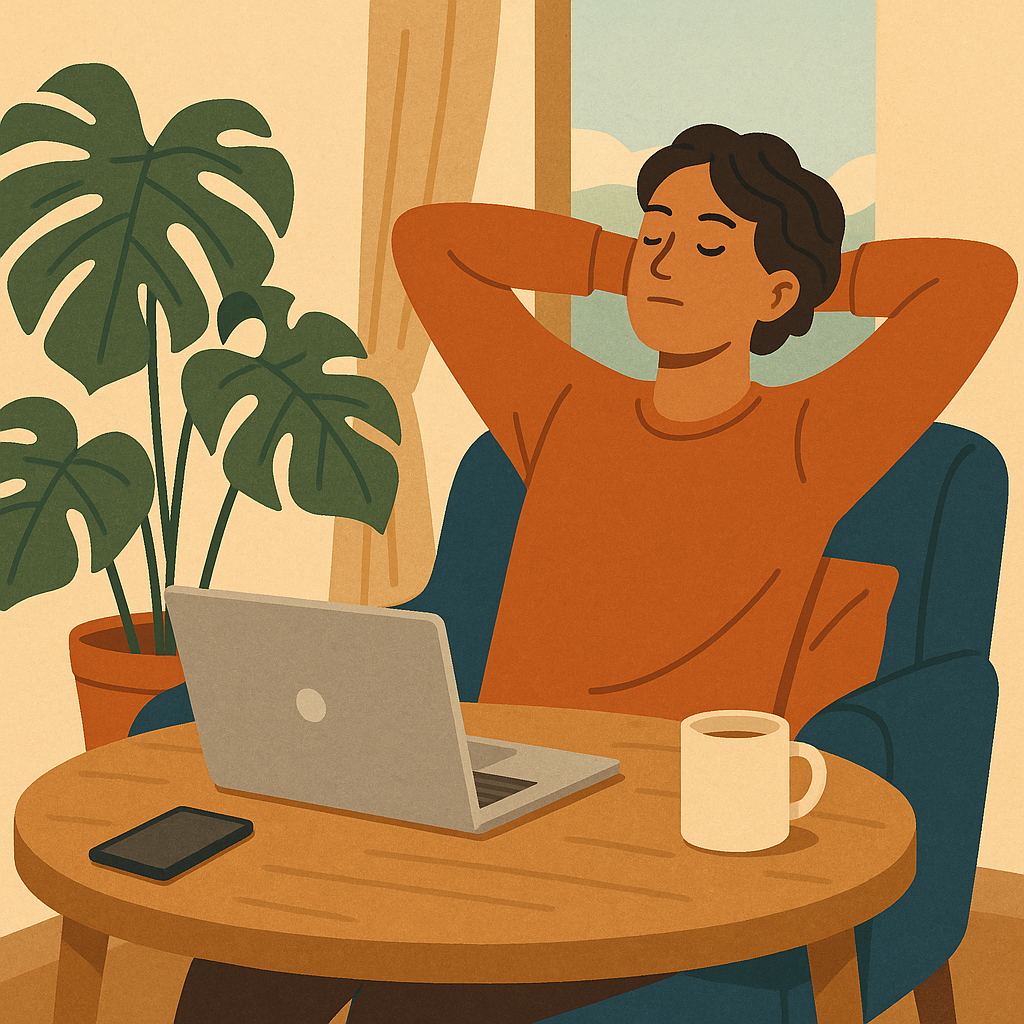In a world where we check our phones more than 80 times a day, digital overwhelm isn’t just a buzzword — it’s our reality. The constant pings, alerts, and scroll sessions are silently exhausting us. That’s why more people are turning to a simple but powerful practice: intentional digital breaks.
This isn’t about running away to a cabin in the woods (unless that’s your vibe). It’s about choosing when to engage and when to disconnect, on purpose. The trend is growing, and it’s backed by science, real stories, and even a quiet shift in workplace culture.
Let’s break down the what, why, and how of this movement, and how you can actually make it work for your life — without deleting all your apps and throwing your phone in a lake.

What Are Intentional Digital Breaks?
Intentional digital breaks are planned periods where you deliberately unplug from screens — especially phones, laptops, and social media. It’s different from just forgetting your phone at home. The key is in the intentionality. You choose when and how long to disconnect.
Think:
- Turning off notifications for 24 hours
- Taking a weekend off social media
- Designating “no-phone” hours during your day
These breaks help reset your mental bandwidth and give your brain a chance to process, reflect, and just breathe.
Why It Matters More Than Ever
We’re not just talking about digital fatigue anymore. We’re seeing:
- Higher anxiety and depression rates tied to overuse of social media
- Lower productivity and constant context-switching caused by app and email notifications
- Increased loneliness, ironically, from hyperconnectivity
And guess what? Gen Z and Millennials are leading the charge in stepping back. The rise of “digital minimalism” and app timers isn’t random. People are craving quiet.
Signs You Need a Digital Break
If any of these sound like you, your brain might be screaming for a break:
- You open TikTok “just for 5 minutes” and reemerge an hour later
- You feel twitchy when you can’t check your phone
- You’re exhausted but haven’t done anything physical
- Your attention span is toast
- You feel like you’re missing out — constantly
How to Take Intentional Digital Breaks (Without Going Off the Grid)
Here’s a practical guide to getting started:
1. Set Clear Boundaries
Decide what “digital break” means for you. Total phone detox? Just social media? Start small.
- Try: No phone after 8 PM
- Or: Instagram-free weekends
2. Use Technology to Fight Technology
Let your phone work for you:
- Turn on “Focus” mode or “Do Not Disturb”
- Use app blockers like Freedom or Forest
- Set screen time limits
3. Replace, Don’t Just Remove
What will you do instead of scrolling?
- Read a physical book
- Go outside
- Journal
- Actually call someone
4. Communicate Your Break
Let friends or colleagues know if you’re taking a digital step back. It prevents misunderstandings and helps you commit.
5. Reflect and Adjust
After your break, ask:
- How do I feel?
- What did I miss (or not miss)?
- What do I want to change moving forward?
Digital Breaks in the Workplace? Yes, It’s Happening
More companies are adopting “tech-free zones,” encouraging intentional digital breaks, and even giving employees time off social media. Big names like Microsoft have piloted digital detox weeks to reduce burnout. Some startups are going further with “offline Fridays.”
The conversation around productivity is shifting. It’s no longer about how always-on you can be, but how well you manage your attention.
Intentional Digital Breaks Aren’t a Luxury—They’re a Necessity
Let’s be real. The internet isn’t going anywhere. But neither is your brain. If we want to stay sane, focused, and human in a hyper-connected world, taking intentional digital breaks isn’t optional.
They don’t need to be perfect. You’ll mess up. You might relapse into a late-night TikTok binge. But the point is to try.
You can start with 15 minutes. Or 1 hour. Or one day a week. The key is consistency, not intensity.
And the benefits? Increased focus, better sleep, less anxiety, stronger relationships, and a clearer mind.
Not bad for just pressing pause now and then.
References
Mental Health & Screen Use:
1. Twenge, J. M., & Campbell, W. K. (2018). Associations between screen time and lower psychological well-being among children and adolescents.
Source: JAMA Pediatrics via American Medical Association
Productivity and Attention:
2. Mark, G., Gudith, D., & Klocke, U. (2008). The cost of interrupted work: More speed and stress.
Source: Harvard Business Review / University of California Irvine Research
Loneliness and Digital Overload:
3. American Psychological Association (APA). (2023). Social Media Use Linked to Lower Levels of Social Connection.
Source: APA News Release






